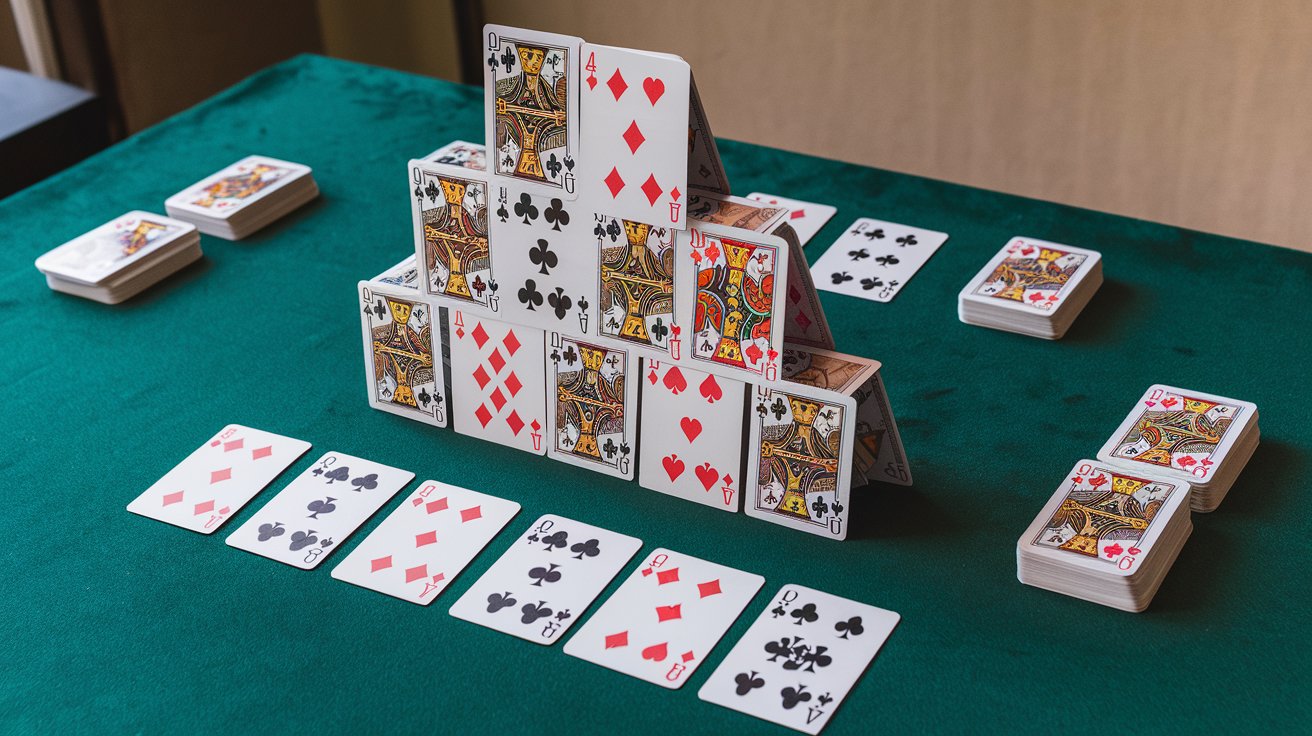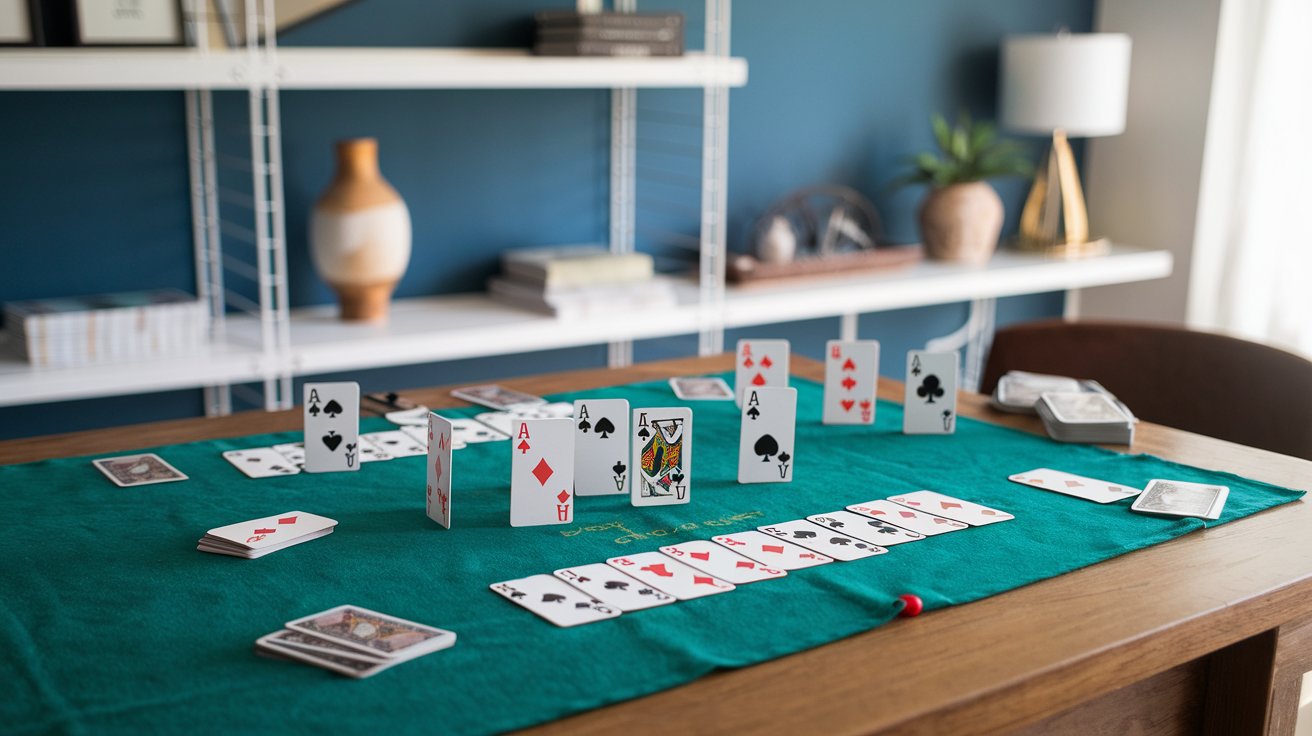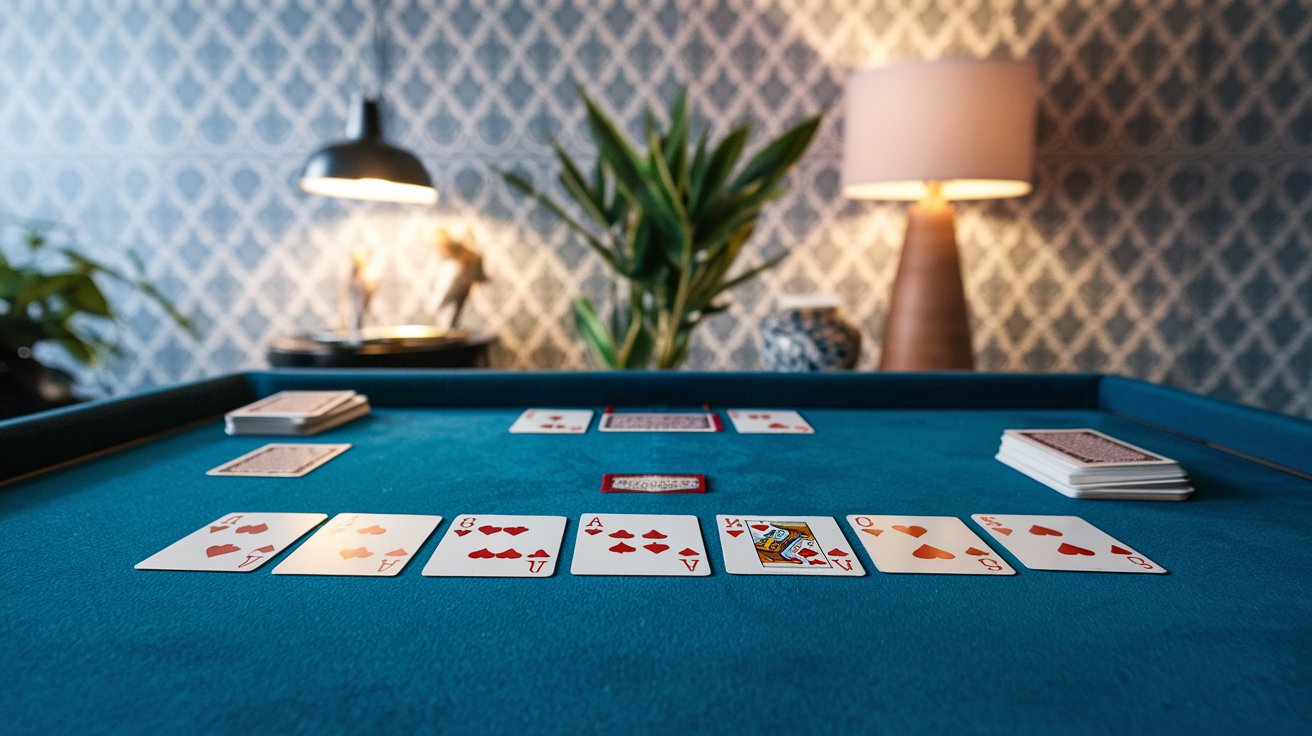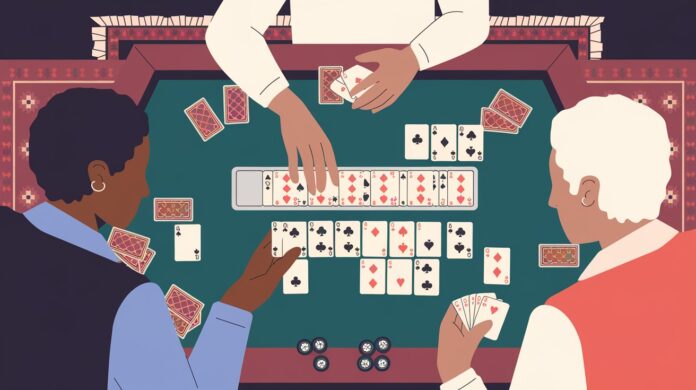Rummy has charmed card game enthusiasts for generations with its perfect blend of skill, strategy, and just the right amount of luck. Among its many variations, 13-Card Rummy (also known as Indian Rummy or Points Rummy) stands out as one of the most engaging and intellectually stimulating versions. Popular throughout South Asia and increasingly gaining fans worldwide, this game offers endless hours of entertainment while sharpening your analytical thinking and pattern recognition skills.
Whether you’re completely new to the game, looking to refresh your understanding of the rules, or seeking to elevate your gameplay to the next level, this comprehensive guide covers everything you need to know about 13-Card Rummy. From basic setup to advanced winning strategies, let’s explore what makes this card game so captivating and how you can master it.
What Is 13-Card Rummy?

13-Card Rummy is a draw-and-discard card game where players aim to form valid sets and sequences using the 13 cards dealt to them. Unlike some other rummy variants, the number of cards is fixed at 13 per player, creating a perfect balance of possibilities without overwhelming complexity.
The game’s objective is straightforward yet challenging: be the first player to arrange all your cards into valid combinations and “declare” (finish the game) with the lowest possible points in unmatched cards.
Equipment Needed
To play 13-Card Rummy, you’ll need:
- 1-2 standard decks of 52 cards (including jokers)
- For 2 players: 1 deck
- For 3-4 players: 2 decks
- For 5-6 players: 3 decks
- A flat surface like a table
- Optional: A dedicated rummy board or mat
- Paper and pencil for scoring
Basic Rules of 13-Card Rummy
Game Setup
- Seating and Deal: Players sit in a circle. The dealer is chosen randomly and deals 13 cards face-down to each player.
- The Stock and Discard Piles: After dealing, the dealer places one card face-up to start the discard pile and places the remaining cards face-down to form the stock (or draw) pile.
- Jokers: In 13-Card Rummy, there are two types of jokers:
- Printed Jokers: The standard joker cards in the deck
- Wild Card Jokers: A randomly selected card that serves as an additional joker for that game (e.g., if 7♠ is selected, all 7s become wild card jokers)
Valid Combinations
To win at 13-Card Rummy, you need to arrange your 13 cards into valid combinations:
- Sets (or Groups): Three or four cards of the same rank but different suits. Example: 9♠, 9♥, 9♦
- Sequences (or Runs): Three or more consecutive cards of the same suit.
- Pure Sequence: A sequence without any jokers. Example: 4♥, 5♥, 6♥
- Impure Sequence: A sequence using one or more jokers as substitutes. Example: 7♣, 8♣, Joker (representing 9♣)
Mandatory Requirements
The most critical rule in 13-Card Rummy is that to declare and win, you must have:
- At least two sequences, one of which must be a pure sequence (without jokers)
- All remaining cards formed into valid combinations (sets or sequences)
This requirement ensures the game maintains its strategic depth and prevents lucky early finishes.
Gameplay Process
Each player’s turn consists of:
- Drawing a Card: Take either the top card from the stock pile or the top card from the discard pile.
- Arranging Your Hand: Organize your cards into potential sets and sequences.
- Discarding a Card: End your turn by discarding one card face-up onto the discard pile.
Declaring and Winning
When a player has arranged all 13 cards into valid combinations (meeting the mandatory requirements), they can “declare” by placing their cards face-up and discarding their final card face-down.
If the declaration is valid (all combinations are correct and meet requirements), that player wins the hand. If invalid, the player who made the incorrect declaration loses and receives penalty points.
Scoring System
13-Card Rummy uses a points system where:
- Cards 2 through 10: Face value (2=2 points, 3=3 points, etc.)
- Face cards (J, Q, K): 10 points each
- Ace (A): 10 points
- Jokers: 0 points
When a player declares successfully, other players tally the points of their unmatched cards. These become penalty points added to their score. The goal is to maintain the lowest score possible.
Advanced Rules and Variations

Different communities and platforms may have slight variations in rules. Here are some common advanced rules:
Drop System
Most 13-Card Rummy games include a drop system that allows players to exit a hand early:
- First Drop: Leaving before playing any cards = 20 points penalty
- Middle Drop: Leaving after playing at least one card = 40 points penalty
- Last Drop: Being caught with unmatched cards when someone declares = Points equal to unmatched card values
Value and Points Rummy
There are different formats for playing 13-Card Rummy:
- Points Rummy: Each game is separate, with points converted to cash values
- Pool Rummy: Players start with a fixed number of points (often 101 or 201) and are eliminated when they exceed that limit
- Deals Rummy: A fixed number of deals are played, and the player with the lowest points at the end wins
Special Card Rules
Some variations include special rules for particular cards:
- Printed Jokers: Can substitute for any card in sets and impure sequences
- Wild Jokers: All cards of the same rank as the selected wild card become jokers
- Ace: Can be high (after King) or low (before 2) in sequences, but not both simultaneously
Essential Tips for Beginners
If you’re just starting with 13-Card Rummy, these fundamental tips will help you avoid common pitfalls:
1. Focus on Pure Sequences First
Since you must have a pure sequence to declare, prioritize forming one as early as possible. This gives you flexibility with the rest of your hand.
2. Discard High-Value Cards Early
Unless they’re part of a developing sequence or set, discard high-value cards (K, Q, J, A, 10) early to minimize potential penalty points.
3. Keep Middle Cards
Cards like 5, 6, 7, and 8 have greater flexibility in forming sequences as they can be part of more potential combinations. For example, a 6 can be part of 4-5-6, 5-6-7, or 6-7-8.
4. Watch What Others Discard
Pay attention to discarded cards to deduce what combinations opponents might be building and avoid discarding cards they need.
5. Use Jokers Wisely
Jokers are valuable resources. Use them efficiently to complete otherwise difficult combinations, but remember they cannot be used in pure sequences.
Intermediate Strategies

Once you’ve mastered the basics, elevate your game with these intermediate strategies:
1. Card Grouping Techniques
Organize your hand into “near sets” and “near sequences” to visualize potential combinations more easily:
- Group cards of the same suit together to spot potential sequences
- Arrange cards in numerical order within suits
- Keep track of cards that could serve multiple purposes
2. Optimal Joker Utilization
Rather than using jokers for the first possible combination, consider where they provide maximum value:
- Use jokers to replace high-value cards in sets
- Save jokers for completing sets that are otherwise difficult to form
- Consider keeping a joker unassigned until later in the game when your strategy solidifies
3. Smart Discard Strategy
Beyond discarding high-value cards, develop a nuanced approach to discards:
- Discard cards that are far from forming combinations (e.g., singleton cards with no nearby cards of the same suit)
- Avoid discarding middle cards (4-8) of suits that you’re collecting
- Sometimes discarding a lower-value card is better if it’s unlikely to help you form a combination
4. Defensive Play
Consider not just what you need but what might help opponents:
- Track discards to identify what combinations opponents might be building
- Avoid discarding cards that could complete an opponent’s visible or suspected sequence
- If you notice a player picking up cards of a particular suit or rank, avoid discarding similar cards
Advanced Winning Techniques
For serious players looking to dominate the game, these advanced techniques can provide a competitive edge:
1. Card Counting and Probability
Develop your ability to track cards and calculate probabilities:
- Remember which high-value cards have been discarded
- Keep mental notes of which jokers remain in play
- Calculate the probability of drawing needed cards based on what you’ve seen discarded
2. Bluffing and Misdirection
13-Card Rummy involves psychological elements:
- Occasionally discard cards that suggest you’re building different combinations than you actually are
- Maintain a consistent drawing and discarding pace regardless of your hand quality
- Create uncertainty about which cards you need to prevent opponents from playing defensively against you
3. Endgame Strategies
As the stock pile diminishes, adjust your strategy:
- Calculate whether you can complete your combinations before the deck runs out
- Consider dropping if your hand is poor and the deck is running low
- Be more aggressive with risky plays if time is running short and you’re behind
4. Alternative Winning Paths
Sometimes the fastest path to victory requires creative thinking:
- Consider abandoning nearly-complete but challenging combinations in favor of simpler ones
- Reassess your hand frequently to identify new potential combinations
- Sometimes splitting a four-card set into two different combinations is more efficient
Common Mistakes to Avoid
Even experienced players can fall into these traps:
1. Tunnel Vision on Specific Combinations
Don’t become fixated on completing a specific sequence or set if the cards aren’t coming your way. Remain flexible and adapt your strategy based on the cards you draw.
2. Neglecting the Pure Sequence Requirement
New players sometimes focus so much on creating any valid combinations that they forget the mandatory pure sequence requirement.
3. Poor Joker Management
Using jokers inefficiently—such as using them in combinations where natural cards would suffice, or using them too early before your strategy is defined.
4. Ignoring Opponents’ Actions
Failing to pay attention to what cards opponents are picking up and discarding leaves you vulnerable to providing exactly what they need.
5. Holding High-Value Cards Too Long
Keeping high-value cards like Kings and Queens too long in hopes of forming combinations can result in high penalty points if another player declares.
Playing 13-Card Rummy Online
The digital revolution has brought 13-Card Rummy to online platforms, offering several advantages:
Popular Platforms
Numerous websites and apps offer 13-Card Rummy, including:
- Rummy Circle
- Junglee Rummy
- Ace2Three
- Adda52
- MPL
Benefits of Online Play
- 24/7 availability of games
- Various stakes levels, from free play to high-stakes games
- Automated dealing and scoring
- Advanced statistics tracking your performance
- Opportunity to play against diverse opponents
Online-Specific Tips
- Use the platform’s auto-arrange feature to help visualize potential combinations
- Take advantage of statistics to identify your strengths and weaknesses
- Start with free or low-stakes games to practice strategies
- Watch for platform-specific rule variations
The Social and Cognitive Benefits of 13-Card Rummy
Beyond entertainment, regular 13-Card Rummy play offers several benefits:
Cognitive Skills Development
- Memory Enhancement: Remembering discarded cards and tracking potential combinations exercises your memory
- Strategic Thinking: Planning several moves ahead develops strategic thinking abilities
- Pattern Recognition: Identifying potential sequences and sets sharpens pattern recognition
- Probability Assessment: Calculating the odds of drawing needed cards develops mathematical thinking
Social Benefits
- Healthy Competition: Engages competitive instincts in a structured, rule-based environment
- Social Bonding: Creates shared experiences and conversation topics
- Cross-Generational Connections: Can be enjoyed by players of all ages, creating family bonding opportunities
- Cultural Connection: Particularly in South Asian communities, rummy provides cultural continuity
Conclusion: Mastering the Art of 13-Card Rummy
13-Card Rummy represents a perfect blend of skill and chance that has captivated players for generations. With its straightforward yet deeply strategic gameplay, it offers endless opportunities for mastery and enjoyment.
Whether you’re playing casually with friends, competing in tournaments, or enjoying online matches, the principles outlined in this guide will help you develop from a beginner to a confident player and eventually to a strategic expert.
Remember that true mastery comes from practice. Every hand presents new challenges and learning opportunities. The best players maintain flexibility, adaptability, and a keen awareness of both their cards and their opponents’ actions.
So shuffle the deck, deal the cards, and embark on the rewarding journey of mastering 13-Card Rummy—a game that perfectly balances accessibility with depth, luck with skill, and simplicity with endless strategic possibilities.
Whether you’re looking to sharpen your mind, connect with friends and family, or simply enjoy one of the world’s most engaging card games, 13-Card Rummy offers a perfect blend of challenge and entertainment that keeps players coming back for “just one more hand” time and time again.

Zareb Saleh is a journalist at Gulf Today and a ghostwriter for Gameoholic, specializing in gaming, technology, and digital culture. With a keen eye for industry trends, he delivers insightful stories that engage and inform readers.




